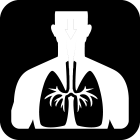Candidate Chemical List
CA SCP - Candidate Chemicals
California Department of Toxic Substance Control (CA DTSC)
Assessment of regulatory needs
EU - PACT-RMOA Substances
European Union / European Commission (EU EC)
Annex II - Prohibited Substances
EU - Cosmetics Regulation
European Union / European Commission (EU EC)
CoHC List (non SVHC)
CPA - Chemical Footprint
Clean Production Action (CPA)
Children's Products
C2C Certified v4.0 Product Standard Restricted Substances List (RSL) - Effective July 1, 2022
Cradle to Cradle Products Innovation Institute (C2CPII)
Formulated Consumer Products
C2C Certified v4.0 Product Standard Restricted Substances List (RSL) - Effective July 1, 2022
Cradle to Cradle Products Innovation Institute (C2CPII)
Priority for Inclusion in the Living Building Challenge Red List
Living Building Challenge 4.0 - Red List of Materials & Chemicals - Effective February 1, 2025
International Living Future Institute (ILFI)
Food Contact Chemicals Database Version 5.0
Food Contact Chemicals Database (FCCdb)
Food Packaging Forum
Substances of Very High Concern (RIVM ZZS)
Substances of Very High Concern (RIVM ZZS)
The National Institute for Public Health and the Environment (RIVM)
TSCA Commercially Active
TSCA Chemical Substance Inventory (Active-Inactive)
US Environmental Protection Agency (US EPA)
GreenScreen LT-1 (based on 2018 Chemical Footprint Project)
GreenScreen Certified Standard for Medical Supplies & Devices Silver-Gold RSL
Clean Production Action (CPA)
Restricted Substances in Products
Apple Regulated Substances Specification
Apple Inc.
New Zealand Inventory of Chemicals (NZIoC)
New Zealand Inventory of Chemicals
Te Mana Rauhī Taiao (Aotearoa New Zealand EPA)
The Australian Inventory of Industrial Chemicals
The Australian Inventory of Industrial Chemicals
Australian Government
Existing Chemicals List
Korea Existing Chemicals List
Korea Ministry of Environment
IECSC-2013
The Inventory of Existing Chemical Substance in China - 2013
China's Ministry of Ecology and Environment
Philippine Inventory of Chemicals
Philippine Inventory of Chemicals
The Philippine Government
DSL-all
EC - CEPA DSL
Environment Canada & Health Canada (EC)
Taiwan Existing Chemical Substance Inventory
Taiwan Existing Chemical Substance Inventory
Taiwan Ministry of Environment
TSCA - Substantial Risk Notices
TSCA Chemical Substantial Risk Notices
US Environmental Protection Agency (US EPA)
NICNAS
Australia - National Industrial Chemicals Notification and Assessments (NICNAS)
Australian Government
All Products
C2C Certified v4.1 Product Standard Restricted Substances - Effective July 1, 2025
Cradle to Cradle Products Innovation Institute (C2CPII)
Cosmetics and Personal Care Products
C2C Certified v4.1 Product Standard Restricted Substances - Effective July 1, 2025
Cradle to Cradle Products Innovation Institute (C2CPII)
Japan - CSCL
Japan - Chemical Substances Control Law
Government of Japan
Substance evaluation - CoRAP
ECHA - Community Rolling Action Plan (CoRAP)
European Chemicals Agency (ECHA)
Trade Union Priority List 2.0
ETUC - Trade Union Priority List 2.0
European Trade Union Confederation (ETUC)
CSCP - Reportable Ingredient List
California Safe Cosmetics Program - Reportable Ingredient List
California Department of Public Health (CDPH)
Data generation and assessment
EU - PACT-RMOA Substances
European Union / European Commission (EU EC)
Regulatory risk management
EU - PACT-RMOA Substances
European Union / European Commission (EU EC)
 Likely to cause
Likely to cause
 Can cause
Can cause
 May cause
May cause



















